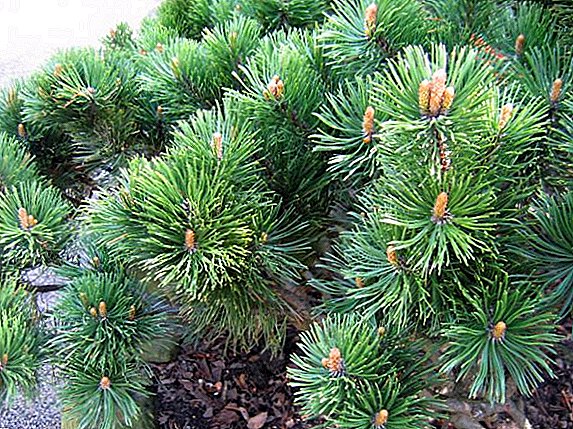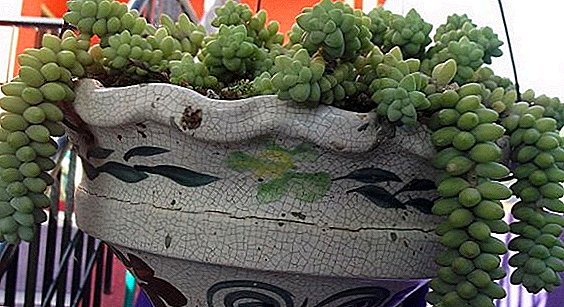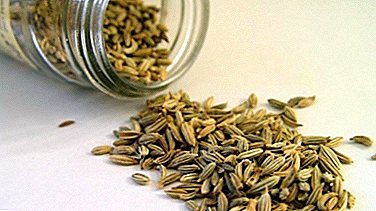 Sour, ordinary or lettuce sorrel several centuries ago it was considered a weed plant and exterminated from the gardens in our territories. They began to add it to food relatively recently, and, meanwhile, sorrel has a large range of healing properties, so it is used both in cooking and in folk healing.
Sour, ordinary or lettuce sorrel several centuries ago it was considered a weed plant and exterminated from the gardens in our territories. They began to add it to food relatively recently, and, meanwhile, sorrel has a large range of healing properties, so it is used both in cooking and in folk healing.
A huge advantage of the plant is that it appears one of the first in the spring, and, thanks to its rich vitamin composition, is a very valuable product during the period of spring avitaminosis.
What is the difference between sorrel sour (lettuce) and horse?
Both plants belong to the Buckwheat family, are grassy, perennial plants. In total, there are more than 150 species of sorrel on the planet, but almost all of them are not used for food and are weeds. Only two types have become widely known: horse and common sorrel.  They differ in size, color, taste, which is discussed in detail in the table. Horse and ordinary species are cosmopolitan plants, that is, they occupy vast areas of the planet, are common on most continents, and are unpretentious to conditions.
They differ in size, color, taste, which is discussed in detail in the table. Horse and ordinary species are cosmopolitan plants, that is, they occupy vast areas of the planet, are common on most continents, and are unpretentious to conditions.
- Specifications - Salad sorrel - Horse sorrel
- Leaf color - Light green - Dark green with red veins
- Plant size - The stem reaches 1 m, the leaves are straight, up to 15-20 cm in length - Tall plant (up to 150 cm) with long, wavy, thick leaves up to 25 cm in length
- Taste - With sour - With bitterness
- Food use - Widely applied - Applied, but less
Both plants are used in cooking and folk healing, and horse sorrel is more used as a healing tool.
Did you know? In the Caucasus, horse sorrel is used for food, which is called aneluk there. It is used only in a dry form, as after drying the plant loses bitterness as a result of fermentation. Horse sorrel leaves are dried, braided in original braids, and then into wreaths, and in this form they are stored for several years in sacks.
Chemical composition
100 g of the plant contains an average of about 20 kcal. The ratio of BZHU and other elements in the sorrel is as follows:
- proteins - 1.5-2 mg;
- fats - 0.3-0.4 mg;
- carbohydrates - 2.5 mg;
- ash - 1.4 mg;
- water - 91 g;
- Fiber - 0.8 mg;
- organic acids - 0.7 mg.
 Among the organic acids in the composition prevail: oxalic, malic, citric, coffee, which give the plant a pleasant, sour taste. Acids are found in the leaves and stem parts of the grass. Root contains tannins and anthraquinone derivatives.
Among the organic acids in the composition prevail: oxalic, malic, citric, coffee, which give the plant a pleasant, sour taste. Acids are found in the leaves and stem parts of the grass. Root contains tannins and anthraquinone derivatives.Vitamin and mineral composition of the plant is as follows:
Vitamins
- Vitamin C - 47 mg
- Vitamin E - 1.9 mg
- Vitamin K - 0.6 mg
- Vitamin B3 - 0.5 mg
- Vitamin B5 - 0.25 mg
- Vitamin B6 - 0.2 mg
- Vitamin B2 - 0.16 mg
- Vitamin B9 - 35 mcg
- Vitamin A - 2.5 mcg
Macronutrients
- Potassium (K) - 362 mg
- Phosphorus (Ph) - 71 mg
- Chlorine (Cl) - 70 mg
- Calcium (Ca) - 54 mg
- Magnesium (Mg) - 41 mg
- Sodium (Na) - 4 mg
- Sulfur (S) - 20 µg
 Trace elements
Trace elements- Iron (Fe) - 2.4 mg
- Zinc (Zn) - 0.5 mg
- Copper (Cu) - 0.2 mg
- Fluorine (F) - 70 µg
- Iodine (I) - 3 mcg
What properties are endowed with and under what ailments effective
The herb has not only a bright, refreshing taste, but also many useful properties for the body. So, the use of sorrel can have such an effect:
- wound healing and astringent;
- antibacterial;
- anti-inflammatory;
- hemostatic;
- choleretic;
- pain medication;
- diuretic;
- immunomodulatory;
- antihistamine;
- tonic
Did you know? In fact, sorrel is grass, but on an industrial scale it is grown as a vegetable. The first written mention of sorrel dates from the twelfth century and was found in French letters: while the grandees and rulers had the opportunity to feast on sour grass, while in other European countries, sorrel was considered a weed for a long time. In France, this plant is in high esteem and is considered the property of the nation.
In addition, tools based on the roots and leaves of the plant are used to improve digestion, liver function, improve the blood, to reduce the unpleasant manifestations of menopause in women. Spring grass helps with intoxication and poisoning, is used as an antidote.  Sorrel is widely used as an additional tool for such ailments:
Sorrel is widely used as an additional tool for such ailments:
- anemia;
- bleeding: uterine, pulmonary, with hemorrhoids;
- pronounced premenstrual syndrome;
- inflammation of the nasal sinuses (sinusitis, sinusitis);
Also, antritis is treated with marigold tinctures and propolis, kalanchoe, beeswax.
- constipation and diarrhea, colitis, digestive disorders;
- diseases of the cardiovascular system;
- cold, flu;
- scurvy;
- skin diseases (including those of an allergic nature): acne, itching and irritation, burns, furunculosis, dermatitis, ulcers;
- diseases of the oral cavity and throat: sore throat, stomatitis, gum inflammation.
Acids of this plant increase appetite, stimulate digestion, eliminate fermentation and rotting processes in the intestine, as a result of which the microflora improves. Sorrel is a strong antioxidant, so it can be used for the prevention and control of cancer.  In general, a herbaceous plant has a tonic, strengthening and healing effect on the entire body.
In general, a herbaceous plant has a tonic, strengthening and healing effect on the entire body.
Is it possible
Despite the list of useful properties and widespread use, it is important to know whether you can eat a product and use products based on it during special periods of life: when carrying a baby and lactation, as well as with some serious ailments.
Important! For the body more useful young leaves of sorrel, in which the content of acids and other substances is optimal. By the end of the summer, the leaves of grass contain too high a concentration of oxalic acid, which in such quantity can be harmful.
During pregnancy
Doctors and nutritionists argue that during the period of carrying a baby with this product should be careful, and even if you really want to chew sour grass, it is better to give preference to a slice of lemon. The fact is that this product enhances the work of the kidneys, which during pregnancy are already under stress.
Never take sorrel if a pregnant woman is diagnosed with urolithiasis, inflammation in the stomach and intestines, gout.
If you still really want to eat sorrel, you should use it with fermented milk products, for example, sour cream. However, it is first advisable to consult with the doctor leading the pregnancy.
With HB
This question, like the previous one, does not yet have a single medical opinion. Some experts argue that sorrel can cause kidney dysfunction in the baby in the future, but this view has not been confirmed by research.
Another danger lies in the fact that sorrel can provoke an allergic reaction. You should stop using herbs if your baby has such signs: rash, redness, itching, sneezing, swelling and tearing.  However, most experts allow the use of sorrel in HB, but it must comply with a number of rules:
However, most experts allow the use of sorrel in HB, but it must comply with a number of rules:
- you can eat juicy greens 1-2 times a week;
- in case of violations of the gastrointestinal tract, the product must be thermally processed;
- choose only fresh, high-quality food, preferably greens grown in their garden beds;
- Be sure to rinse well before use.
With diabetes
With this pathology of type I and type II, sorrel is permitted for use only if there are no other contraindications for this product. The active ingredients that this spring grass is rich in help regulate sugar levels. Also sorrel is useful for overweight, which is a frequent companion to diabetics.
Sorrel can be used both fresh (which is more desirable), and as part of the main dishes, side dishes.
It will be useful for you to learn how it is recommended to use in case of diabetes: marigold, Jerusalem artichoke, yucca, cornel, creeping couch grass, green onions, Chinese cabbage, sow thistle.
Gout
Gout is a joint disease that is caused by salt deposits. Previously, this disease was called "the disease of kings", since the main reasons were the immoderation in food (mainly of animal origin: meat and fish) and alcoholic beverages.
Gout is strictly contraindicated products, the content of which is a high percentage of oxalic acid, which in the body forms insoluble calcium compounds. Since this substance is the main one in sorrel, it is impossible to use grass in any form and quantity for this ailment. 
Preparation of raw materials
For the application of sorrel in folk medicine, seeds, leaves and roots are harvested. The collection of raw materials lasts from May to mid-late June, as the plant leaves are supersaturated with acids. Collect sorrel should be in dry, sunny weather, after the dew has fallen.
A few tips on how to collect and dry the various parts of the plant:
- Leaves. It is necessary to cut with scissors or a knife for 3 cm to the ground, do not wash, but only to sort and remove the yellow, dry, damaged leaves. Then they can be bundled and hung in a room, dried on paper or sieves. With the above methods of drying the raw material will be ready in 1-2 weeks. It can also be dried in the oven or electric dryer at a temperature of +40 ° C.
- Seeds. Seed ripening occurs in June. Ripened twigs become brown or brown. It is very important not to miss the moment and cut the inflorescences on time, otherwise most of the seeds will crumble. Cut the twigs need to grind in the palms to crumble dried flowers, and blow in the wind. You can also use another method: pour the dried flowers with water for a while, then rub them with your hands right in the water to separate the seeds, then pass through a sieve - the seeds will remain on it. They need to be dried (not under direct sunlight).
- The roots. In general, the roots of the horse plant are subject to harvesting. You need to collect them during the flowering period - from May to July. The roots must be carefully dug, cleaned from the ground, washed, cut into large parts. Drying takes place in a ventilated dry room.
Important! When drying leaves it is not allowed to overdry, when the grass in the palms is easily crushed into powder.
The blanks should be stored in linen bags, cardboard boxes or glassware (the lid should not be tightly closed!), In a dry place, protected from direct sunlight. Under the conditions of use of raw materials can be 3 years.  The drying process is considered complete if the leaves crunch and rustle.
The drying process is considered complete if the leaves crunch and rustle.
How to use in cooking
For culinary use, sorrel can be taken fresh, dried, frozen, salted and even canned.
Read more about the methods of harvesting sorrel for the winter.
For drying, you can use the method that we discussed in the previous paragraph. The remaining methods will be considered in more detail:
- frost. With this method, the shelf life of the product is about a year. Sorrel must be washed, chopped, if desired, you can use the stems. Next, you need to choose one of the ways: to collect chopped grass in plastic bags or lay in ice molds with the addition of 1 tsp. water in each cube. After the plant is packaged, the bags must be signed, specifying the name of the workpiece, the month and year of preparation, as it will be difficult in the future to quickly distinguish crushed frozen sorrel from dill or arugula;
- canning. A very simple way in which the workpiece is stored up to 2 years. The grass needs to be sorted, washed thoroughly and chopped. Sterilize the jars, fill them with greens, add salt (0.5-1 tsp. To a half-liter jar) and pour boiling water;

- salting. 30 grams of salt are used for 1 kg of grass. Greens need to be well washed, dried and chopped. Further salt is added and carefully ground. In this form, the raw material should be left for several hours to form a juice. In sterile jars it is necessary to firmly tamp greens and close the nylon cover. In this form, the workpiece is stored for 1-2 years.
The main methods of harvesting greenery in the winter include drying and freezing. Read more about how to winter such greens as parsley, green onions, dill and arugula.
In fresh form the plant is used for salads, green juices and smoothies, sauces. Greens are used for the first and second courses, vegetable stews, as a filling for baking. You can also create soups, side dishes, snacks and sauces from blanks.
The plant perfectly complements meat and fish dishes, it goes well with other herbs, dairy products, eggs and cereals. In many cuisines of the world, sorrel is a favorite product, for example, in France and England.
Use for therapeutic purposes: traditional medicine
Consider how to prepare remedies for various diseases based on common and horse sorrel.
With sore throat for rinsing
To rinse the throat will need to squeeze the juice from the fresh leaves of sour sorrel. To do this, chop and crush the greens in the mush and then squeeze the juice through the gauze. You should not use a juicer or a meat grinder, as aggressive plant acids can spoil the devices. Juice must be boiled for 5 minutes and taken 3 times a day with food.  Also prepare a decoction for gargling. At 1 tbsp. l raw materials need 400-500 ml of water. Broth braised on low heat for 1 minute and cooled. You can rinse an unlimited number of times, at least - 6 times a day.
Also prepare a decoction for gargling. At 1 tbsp. l raw materials need 400-500 ml of water. Broth braised on low heat for 1 minute and cooled. You can rinse an unlimited number of times, at least - 6 times a day.
With hemorrhoids
In this pathology, the root portion of horse sorrel is used. For cooking tools will need:
- 1 tbsp. l raw materials;
- a glass of boiling water.
Raw water, bring to a boil and keep on low heat for another 15 minutes, then cool and strain. Take the need to a tablespoon up to 5 times a day. The tool is effective not only for hemorrhoids, but also for anal fissures, various types of colitis.
With diarrhea
This problem also applies to raw materials from horse species of grass. You can make a decoction or infusion:
- decoction. Preparing a weakly concentrated tool: 1 tsp. chopped roots will need 1 liter of boiling water. Capacity with the broth should be kept in a water bath for 15 minutes. Do not allow the broth to boil intensely. After the specified time you need to strain and cool the tool. Take for 2 days 1/3 cup before meals;
- infusion. This tool must be prepared in a thermos. At 1 tbsp. l dry leaves will need a glass of boiling water. Soak in a thermos for 12 hours, drain. Take during the day in small sips.
Treatment of diarrhea with these drugs should not exceed 2-3 days. Infusions and decoction of horse sorrel effectively cope with diarrhea, also restore the intestinal mucosa, normalize the microflora.
For lower back pain
If pain in the lumbar region is overtaken, infusion of sorrel will effectively cope with this problem. At 1 tbsp. l dry raw materials will need 300 ml of water.  Raw materials need to fall asleep in boiling water, simmer on low heat for 15 minutes and remove.
Raw materials need to fall asleep in boiling water, simmer on low heat for 15 minutes and remove.
Medicinal plants from these times are used by people to treat diseases of the joints and spine. Learn how to use for the treatment of: zhivokost, bathing, autumn crocus, hot pepper.
Then you need to wrap the container with the infusion tightly and hold for 2 hours. Take this drug is recommended for 2 tbsp. l before breakfast, lunch and dinner.
With inflammation of the bladder
Antibacterial, anti-inflammatory and analgesic properties of greens have been used for cystitis. To combat the ailment, it is necessary to take baths with a decoction of sorrel leaves for 1 week. It is necessary to prepare 1 part of raw materials, 2 parts of water, mix, boil means for 10 minutes, let it brew for a while and pour broth into the bath. It should take at least 10 minutes.
For skin diseases
Organic acids in the product have bactericidal, anti-inflammatory and tonic properties, so the plant is used for many skin diseases. Sorrel can be used both inside and outside.
Consider the most common problems and recipes for them:
Acne
Ingredients:
- decoction of sorrel salad - 50 ml;
- green clay (or any other) - 2 tbsp. l .;
- aloe juice - 1 tsp.
Application:
Cook the broth at the rate of 1 tbsp. l on a glass of water, boil for 10 minutes, cool and strain. Take the specified amount of broth, add juice and clay, mix, apply on steamed skin for 10 minutes, then rinse.
Furunculosis
Ingredients:
- roots of horse sorrel - 2 tbsp. l .;
- water - 1 l.
Application:
Prepare the infusion, take before breakfast and dinner for 1 glass. The course of treatment lasts up to a week.  Dermatitis, itching, eczema
Dermatitis, itching, eczema
Ingredients:
- fresh leaves of horse sorrel - 1 tbsp. l .;
- boiling water - 1 cup.
Application:
Pour boiling water over raw materials, insist 30 minutes, strain. Take after breakfast, lunch and dinner 50 ml. Infusion can be used for compresses and lotions.
Contraindications and harm
Diseases and conditions in which this product should be abandoned:
- increased acidity of the stomach;
- gastritis and ulcers;
- gout, arthritis, rheumatism;
- kidney disease (stones, inflammatory processes);
- allergy.
When using sorrel, even healthy people need to observe moderation - optimally add greens to the diet no more than 2-3 times a week. Also, if possible, do not expose the product to heat treatment, since the process can produce oxalic acid compounds that are not removed from the body.  Abuse of acidic greens can lead to an exacerbation of chronic diseases of the gastrointestinal tract, urinary system. In no case is it worth over-eating the old leaves of a given plant (collected in the second half of summer).
Abuse of acidic greens can lead to an exacerbation of chronic diseases of the gastrointestinal tract, urinary system. In no case is it worth over-eating the old leaves of a given plant (collected in the second half of summer).
Since childhood, the familiar sour, tasty greens are a storehouse of valuable substances for the body. To benefit from the spring product all year round, you can apply a variety of blanks. Sorrel will give dishes freshness, and in case of health problems it will come to the aid of the whole family.












